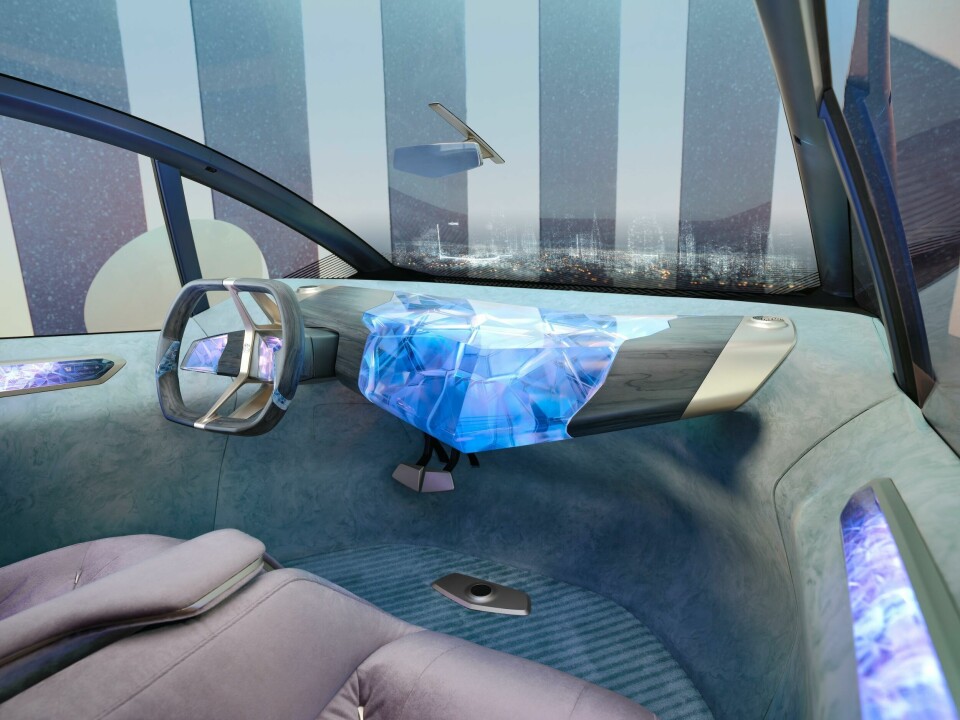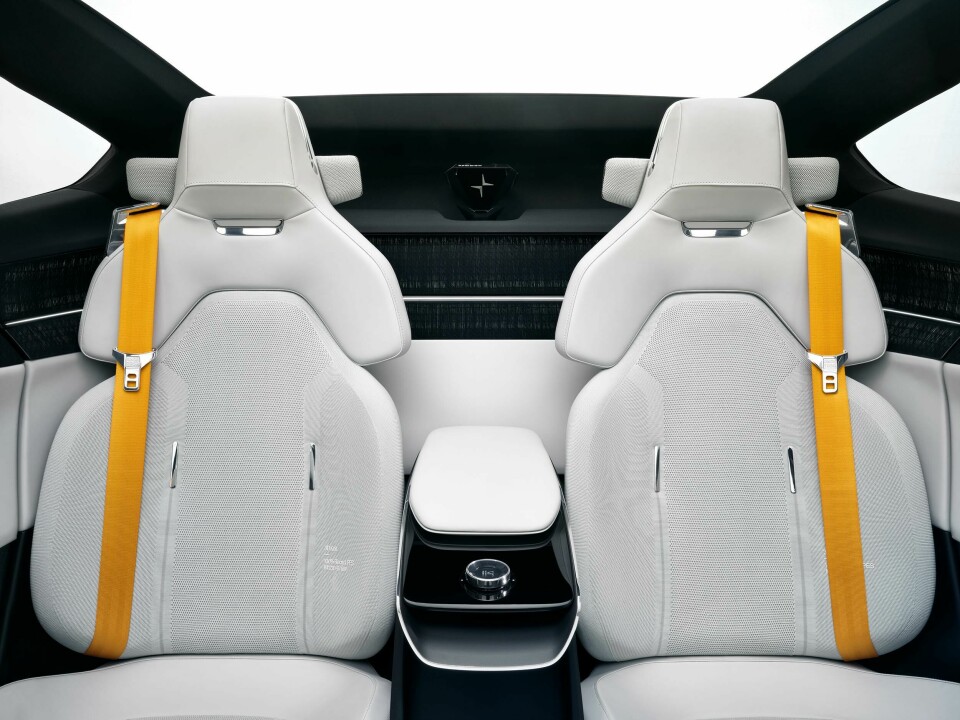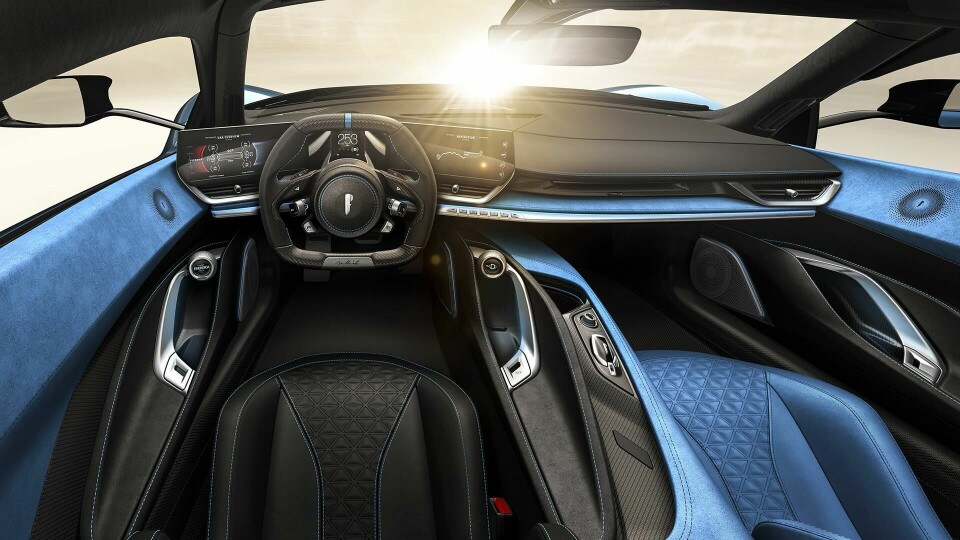
Less is more – the changing face of luxury automotive interiors
Designers from BMW, Polestar, Pininfarina, Italdesign and ELeather discuss how green ambitions are redefining interior luxury
Plush leather, bloated displays and general opulence has been the benchmark for luxury car interiors. But times are changing, and rather than upping the ante, car makers could soon adopt a “less is more” approach.
The challenge lies in launching sustainable interiors without sacrificing the look and feel expected of a luxury marque. Designers must also balance innovation with what can realistically meet mass market price and scalability – and all while pushing the boundaries of design.
To discuss all this and more, Car Design News brought together experts from BMW, Polestar, Automobili Pininfarina, ELeather and Italdesign for its latest livestream, titled: ‘What does the luxury car interior of the future look like?’

A key takeaway is that the customer remains king. New solutions cannot be used squarely on the basis that they are sustainable, and must match or exceed existing expectations. The question is: does luxury marry up with sustainability?
“Five to ten years ago, we might have had to sacrifice beauty or quality,” observed Sara Campagnolo, head of colour and material design at Automobili Pininfarina. “But with the technology available today we can now have the best of both worlds, with beauty, performance and workmanship all in concert. It is the right time to start working on all of this.”
Importantly, a growing awareness of sustainability means automakers are now selling to a different calibre of consumer, one which is better informed and more likely to snub a product with poor eco-credentials. “The challenge is that customers are more educated, informed and demanding,” explained Campagnolo. That challenge is double-pronged, as form and function must now align with being clean and green.
Many companies have already illustrated that you can profit from sustainability by recycling
Conny Blommé, interior design manager at Polestar, said that every element of the interior must be designed with purpose, and not draped in glitter for the sake of it. “It is not about luxury in the sense of status, but luxury as a function,” he explained. Pointing to the Precept Concept revealed in February 2020 – an “exercise in innovation” – he advised there was a “huge focus” on material selection. It was about working with the natural properties of sustainable materials, which allowed for lighter, stronger structures and new aesthetics as a result.
Specifically, the interior of the Precept features a dramatic reduction in plastic and virgin materials, using lightweight natural fibres where possible. Drawing inspiration from the fashion industry, the seats use a 3D-knit material made entirely from recycled yarn derived from plastic bottles. “It is important to remember that new materials and features place different demands on what you can do with the design,” Blommé said.
Reusable materials can also slash production costs. This is a natural attraction of the circularity movement, where parts can be repeatedly broken down and reused. “Many companies have already illustrated that you can profit from sustainability by recycling,” emphasised Campagnolo. “Sustainability is scalable.”

At the 2021 IAA in Munich, BMW took the idea of circularity and ran with it. The i Vision Circular concept, a squat hatchback with the silhouette of a computer mouse, was described at the time as a “testbed” for how sustainability with desirability could combine. Reflecting on the concept during CDN’s latest livestream, Matthias Junghanns, Head Of BMW i Interior Design, remarked that “sustainability and luxury should not come with a trade-off for the customer.”
Elaborating, he described how the i Vision Circular offers “breathtaking materials, great space, cool features and the right materials,” but conceded that the challenge was “combining these materials with care.” For example, his team tried to avoid glued pieces where possible, and simplified the overall mix of materials. On visiting one recycling facility, they observed how little time there was to dismantle the seats, prompting conversations around how different seat foams should be joined in future.
“We need to think about how we build these interior elements to drive innovation and propel us towards sustainability,” he emphasised. “This is what makes circularity happen. In the end, [the concept] is 100% recycled and recyclable, without any sacrifice in luxury for the customer.”
It is super important to have these lighthouse projects… But we need to bring sustainable technologies to market much faster
From OEMs to suppliers, circularity is percolating through the supply chain. ELeather, which turns scrap leather into new rolls of material, currently uses 55% waste leather in its composite sheets, for example. The company plans to become “fully circular” according to Nico Den Ouden, ELeather’s chief commercial officer. A challenge for any kind of mixed recycling project is contamination, but Den Ouden says car makers can learn from what’s being done with footwear, handbags and other consumer products.
To this point, BMW’s Junghanns urged designers to consider monomaterials to help large interior structures to be broken up, melted down and used again. Today, a broad mix of compounds used for interior furnishing and structures can make this difficult. “If two groups of plastics do not go hand in hand, then this creates waste,” he explained.
New materials derived from natural fibres like eucalyptus, soybean, bamboo and cork could also infiltrate the luxury sector. At this early stage, designers are still unsure of their durability and ability to produce at scale but are generally positive on their potential. Carsten Monnerjan, Head of Design at Italdesign, said it is important that designers push the boundaries of “luxury” and explore new avenues. “It is super important to have these lighthouse projects,” he said. ELeather’s den Ouden was of a similar opinion but said the automotive space must become more agile. “In general, we need to bring sustainable technologies to market much faster.”

Luxury is often associated with excess. More is better. That may not be the case moving forward, with cluttered dashboards, a litany of polished surfaces and embedded technology making way for a more streamlined interior. “Having the most is not always the best,” observed Italdesign’s Monnerjan. “I am convinced that these black glass surfaces will be left behind,” agreed BMW’s Junghanns. “We will see new interfaces, with technology stepping back and becoming ready only when you need it.”
The concept of the car as a third living space also remains hotly debated, with visions of boutique hotels on wheels, rolling spas and mobile cinemas. But how might this shape the new age of luxury interiors? “That’s a tricky one to answer,” said Polestar’s Blommé, “as it is more tech-based as than design-driven. I expect we will see a greater variety of luxury solutions, and that will evolve in a way that hasn’t been seen before.”
Consumer expectations are changing, and the definition of luxury may not be as concrete as it is today. “The interior has always set the standard for the luxury experience, but the expectations of our customers are evolving,” Junghanns concluded. “They are looking for space, quality of life, a good place to talk to friends and family, or somewhere to watch a movie and relax. It is about the power of choice, and interior layout is king in this respect.”
Sustainability efforts are ultimately leading designers down new paths, with the promise of not only a reduced carbon footprint but a radically different premium experience. Once defined by tech and lavish materials, the luxury interior of the future could instead lean on reusable materials derived from unlikely sources and an overall reduction in clutter.



